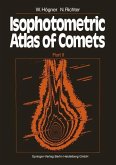In late 2007, the Japanese Space Exploration Agency (JAXA) placed the Kaguya/ Selene spacecraft in orbit around the Moon to probe the Moon's surface and interior. But unlike previous lunar orbiters, Kaguya carries a high definition television camera (HDTV) sent beyond Earth orbit. Sponsored by the Japanese NHK TV network, the HDTV has amazed both scientists and the public with its magnificent views of the lunar surface. What makes these images so much more engaging than standard vertical view lunar photography is that they are taken looking obliquely along the flight path. Thus, they show the Moon as it would be seen by an astronaut looking through a porthole window while orbiting only 100 km above the lunar surface. This is the view we all would wish to have but are never likely to, except vicariously through the awe-inspiring Kaguya HDTV images. Each page features a HDTV image with a map of the entire Moon on the upper left showing where the image is located. On the upper right is a100-150 word description. Seeing the Moon is not intended solely for lunar scientists who are striving to work out the mysteries of the Moon's origin and evolution. Everyone can appreciate the natural beauty and be entranced by the view of the nearby world where humans may one day live.
Dieser Download kann aus rechtlichen Gründen nur mit Rechnungsadresse in A, B, BG, CY, CZ, D, DK, EW, E, FIN, F, GR, HR, H, IRL, I, LT, L, LR, M, NL, PL, P, R, S, SLO, SK ausgeliefert werden.









